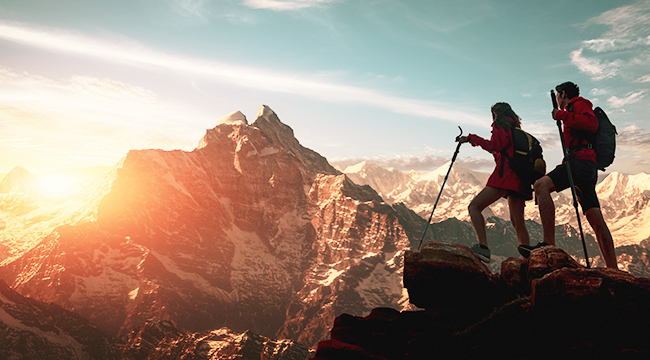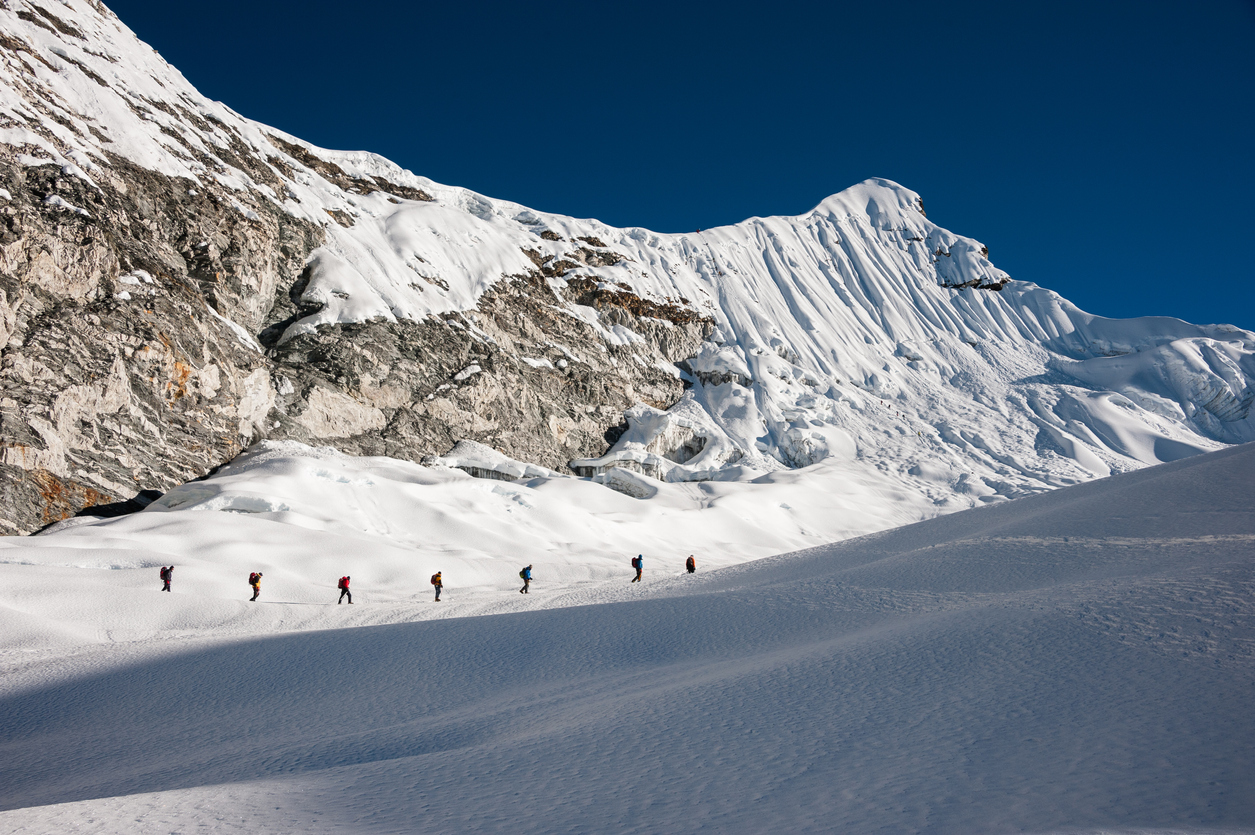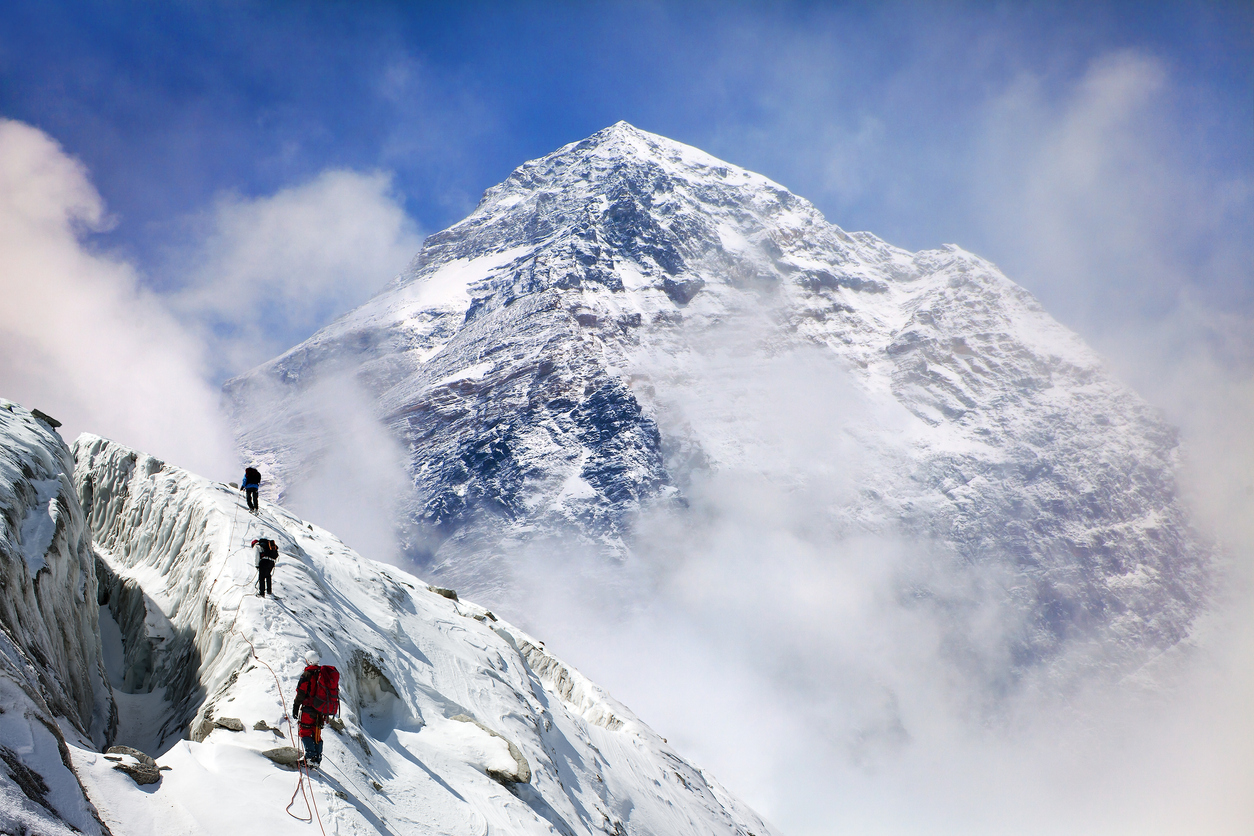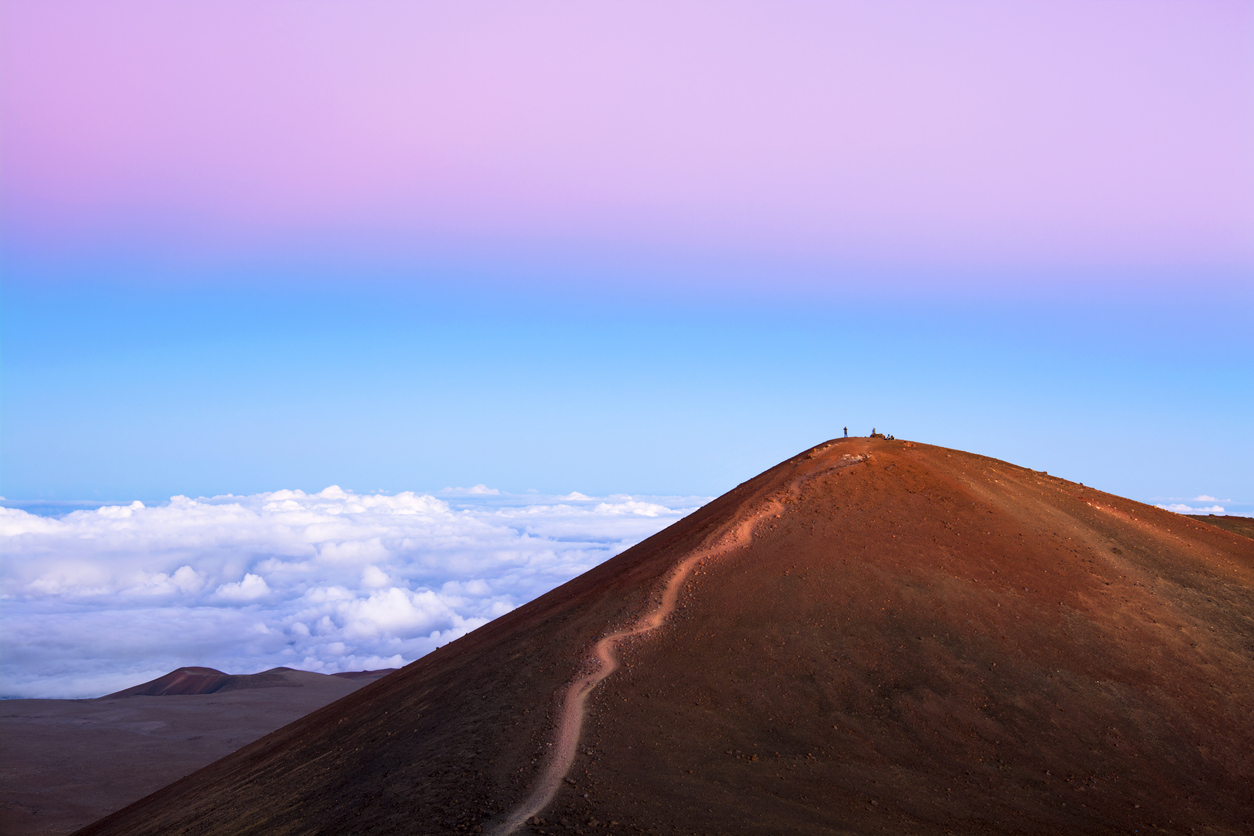
Climbing Mount Everest truly is a feat of human endurance. As such, it’s become a symbol of achievement against the odds. “That’s my Everest,” you might say about anything from finishing a marathon to eating a particularly large donut. Meanwhile, the actual Everest has taken on almost mythical properties — the sort of adventure that straddles the line between badass, insane, and plain dumb. Anytime you make the choice to enter something called “the Death Zone” — an altitude that humans cannot survive in — you need a little madness in your thinking.
But in its legendary status, it can be easy to forget that Mount Everest’s dangers are very real. Monday, American climber Christopher John Kulish died up there — making him the eleventh climber to lose their life to Everest this year alone. So why are so many folks dying on Everest this year? Many say, congestion. There are too many people attempting the summit and it’s a massive issue. This is, in part, thanks to the Nepali government issuing a record number of permits (381) this season.
It may be confusing to understand why more people climbing Everest is leading to more danger — we normally imagine high-trafficked hikes to be safer, there are more people around to help. But Everest isn’t a normal climb. To successfully (and safely) climb and descend Everest, you need to keep moving, and that’s something that’s not happening as fast as it should be right now. Over 200 people were waiting in line to reach the summit in a single day last week. People literally died in that line because, again, they were in the Death Zone and their bodies couldn’t take it anymore. Hundreds of climbers had to walk over people who had just died and were still tethered to safety ropes. That’s horrifying.
https://www.instagram.com/p/ByA1YItngdt/
Walking over corpses has always been part of the Everest experience. People die up there every season and it’s damn near impossible to remove the bodies. Which is another problem about its overcrowding, it’s hard to remove anything. There’s mounting human waste and piles of garbage. Mountains of garbage. The garbage situation has gotten so bad on the Nepali side of Everest that each climber is required to carry out ten kilos of waste when they leave Base Camp. And, sadly, that’s barely making a dent in the trash issue up there.
This isn’t anything new. The first expedition to Everest in 1922 saw seven climbers die thanks to an avalanche. In 1924, four more died trying to summit the peak. More climbers died in the 1930s. Then, it was quiet up there until 1953 when Edmund Hillary and Tenzing Norgay successfully summited the world’s tallest mountain.
Then, in the 1970s, expeditions started gaining popularity for their danger and extreme experience, and in the 1990s, things really started to skyrocket. Non-sherpa guides started selling rich westerners programs to climb the holy mountain. This, ultimately, has led to very inexperienced climbers attempting the peak simply because they can afford to. Of course, many die up there.
Over the last decade, Nepal has tripled the number of permits it sells, leading to up to 800 people attempting the summit in a single season. The over-crowding combined with human waste and garbage issues may mean that the once-pristine mountain is at a breaking point. It’s not so much that we’re loving Everest to death like a Thai beach or Croatian town. It’s more like we’re abusing this particular place to death for, what, bragging rights?

What can we do to change this? There are alternatives to dying on Everest or contributing to someone else’s death who is waiting to climb. Here are a few alternatives we can think of.
Don’t Go To Everest
This is the simplest solution. Just don’t go. Do anything else with the $50,000 to $100,000 is costs to climb Everest. Though, this feels a bit like throwing the baby out with the bathwater. We do have to consider the local community and how their economy has come to rely on Everest tourism. So…
Go To Base Camp And Call It A Day
If that wanderlust to see Everest is too strong, then simply hike up to Base Camp. You’ll still be scratching that travel itch and supporting the local community. Hire a guide to take you up to the base. Spend money there. Take your ‘Gram shot. Go home.
Donate The Money You’d Spend Climbing Everest
You can 100 percent donate the money you would’ve spent on an Everest summit to the communities living around Everest. Look, you can still invest your “tourist” dollars into these communities without going there. National Geographic has an entire section devoted to all the community and charity services that support the people living in the area.
Summit Everest But Only With A Lot Of Experience First
Summit at least ten other peaks first. You need to be in the best physical and mental condition of your life to summit Everest. Climb less touristed peaks first. Get into mountaineering. Don’t do it for the photos or the bragging rights. Do it for you. Becoming a mountaineer isn’t about saying you’re one, it’s about embracing your fears and coming back a stronger person for it. That takes time and effort. Paying $50,000 to climb Everest isn’t a shortcut to any of that.
Climb Mauna Kea Instead
Mauna Kea is the planet’s actual tallest mountain. The mountain is one of the five volcanoes that make up Hawaii’s Big Island and is the world’s tallest mountain by a fair bit. The thing is, part of Mauna Kea is underwater. Still, the Hawaiian mountain is 33,464 feet high, compared to Everest’s 29,029 feet. Is that too pedantic? Maybe. It’s still a dangerous climb though. So, thrill-seekers, you will get that rush.

So should you go to Everest? We can’t tell you what to do. We fully support you following your travel dreams. But to follow all of our travel dreams, we have to be aware of what we bring with us with overtourism and a lack of sustainability. Just going somewhere because you want to isn’t good enough in the age of overtourism.
Everest is going through a traffic jam right now. Now may not be the best time to go, or next year, or even the next five years. Maybe it’s time to give the Holy Mother some time to rest and recover. Plus, there are literally thousands of other peaks you can climb on every continent on our planet. By all means, climb mountains, push your limits, experience, and grow. You don’t have to go to Everest to do any of that.







